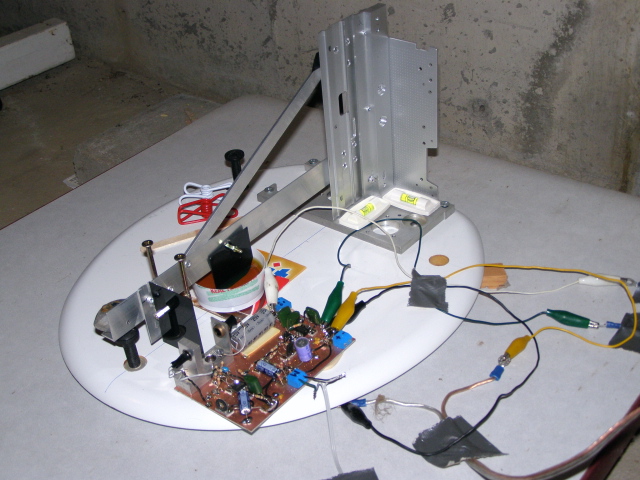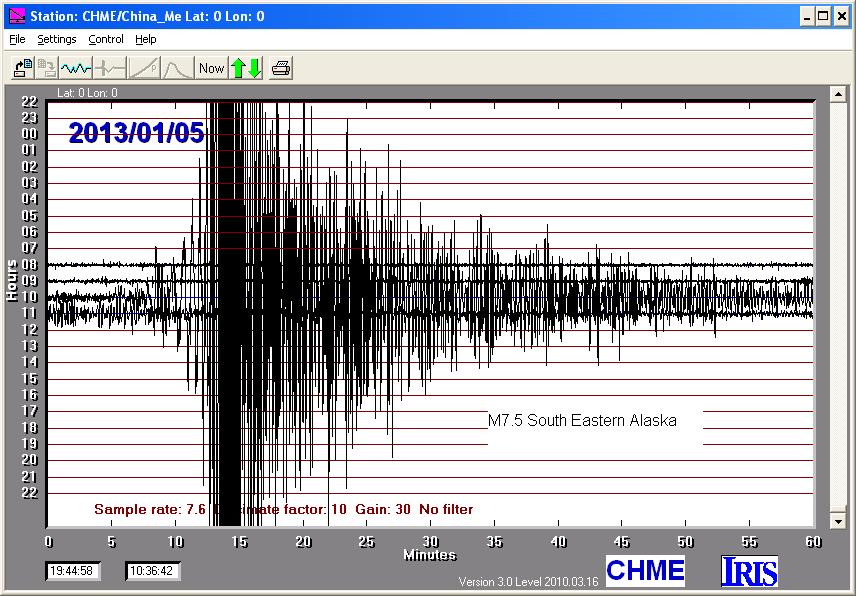
This detector uses the Radio Shack IR diode/transistor pair for position sensing. Although not many nice things are said on the web about using optical position sensing, I find it works very well.
This recording of a M7.5 quake in Southeastern Alaska exceeded the dynamic range of the seismometer. The quake was very large but produced little damage.

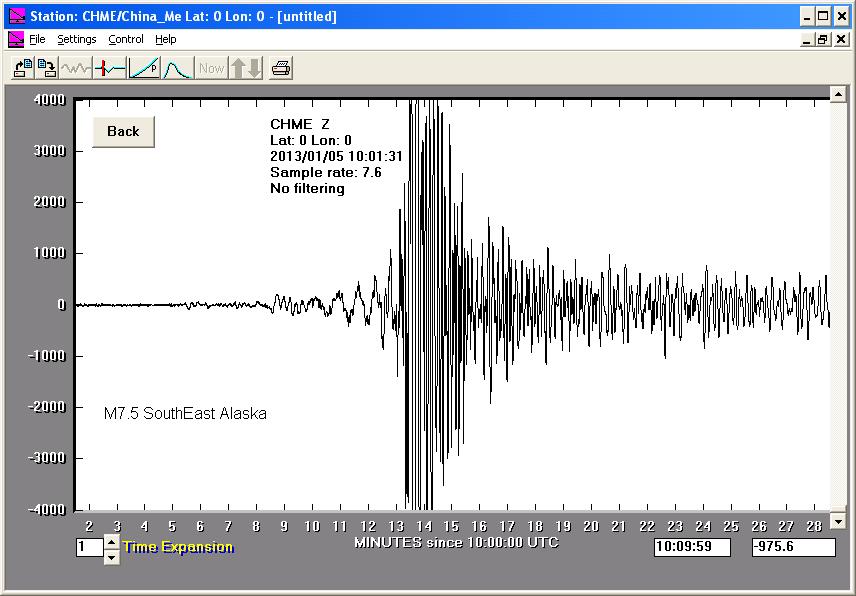
Well I have discovered why the local earthquake in Hollis produced such a small recording, and why the 7.7 Queen Charlotte earthquake produced no recording at all - a piece of duct tape had fallen off the top of the box that is used for a cover and it fell on the arm of the seismometer effectively fixing it in place.
A rare event in Maine is a local earthquake large enough to be felt. The recording is a M4.0 earthquake in Hollis, Maine. It was originally classed at M4.7 and was felt over a few states in New England.
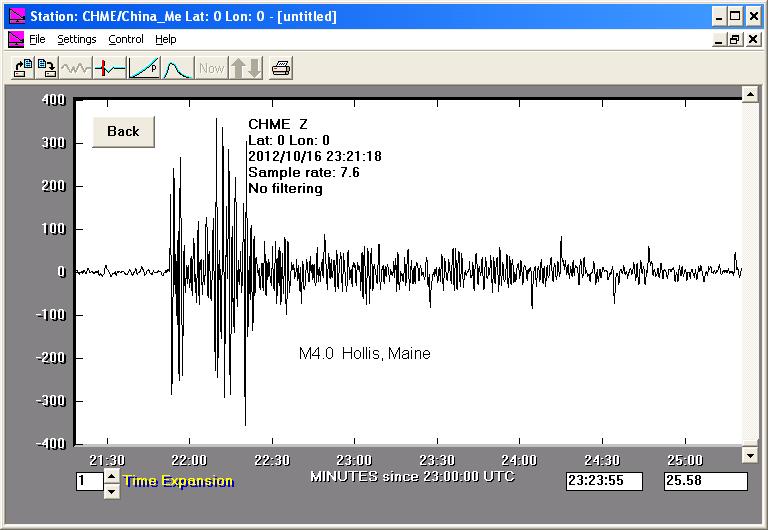
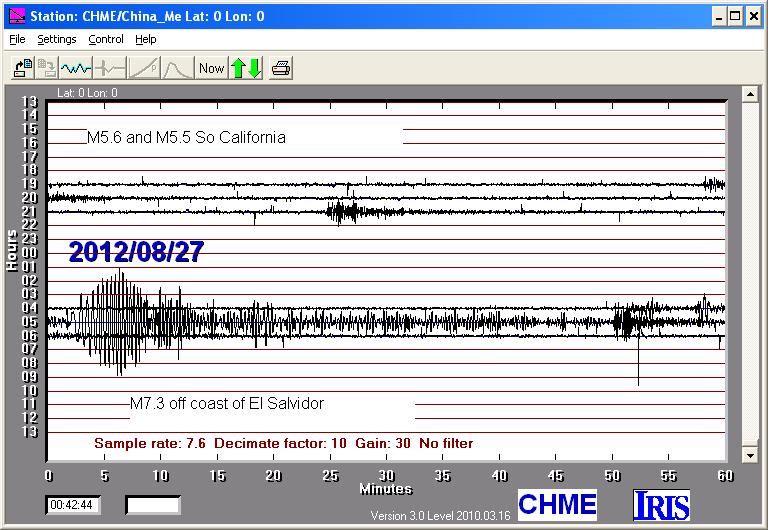
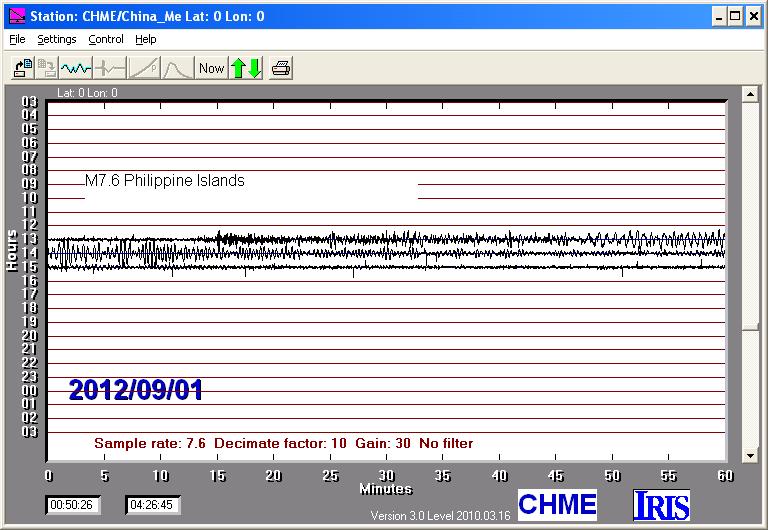
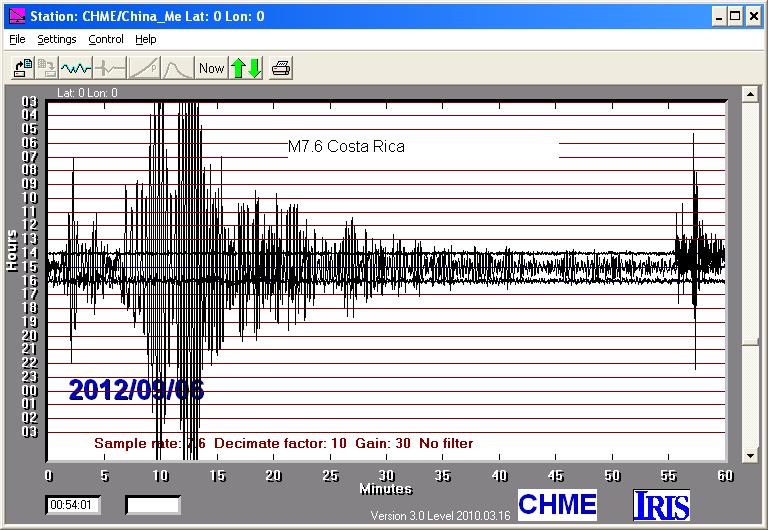
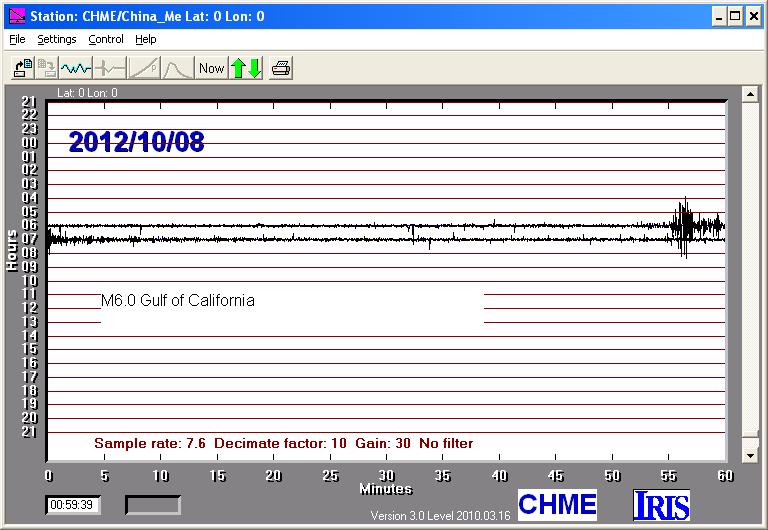
Off the coast of Russia, Sea of Okhotsk, there was a M7.7 earthquake. The depth was very deep, and as a result the surface waves are very small. The recording appears to be S waves and surface waves.
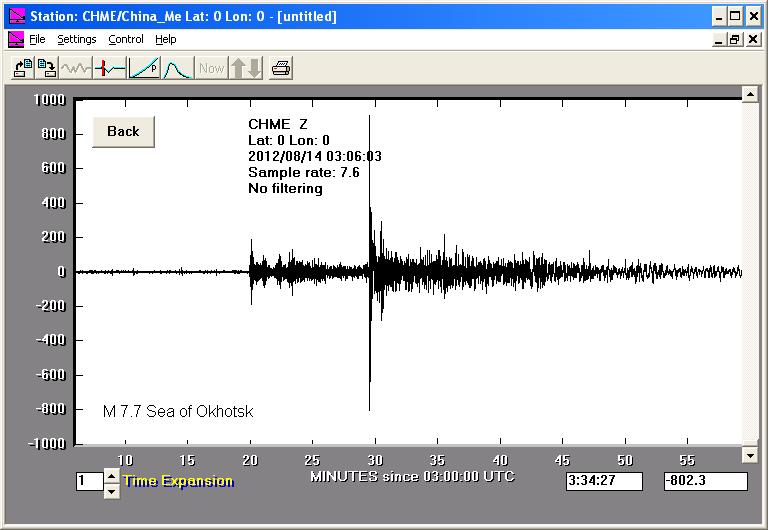
The past 24 hours has seen several very large earthquakes. There was a M8.6 quake off the coast of Sumatra followed by a M8.2 quake two hours later. These were very large earthquakes. Then 10 hours later there was a M5.9 quake off the coast of Oregon and 15 minutes later a M6.5 quake at Michoacan, Mexico. Eight hours later there were two quakes in the Gulf of California, Baha Mexico, a M6.2 and 10 minutes later a M6.9. The recording of the last quake exceeded the 13 bit dynamic range of the system being used.
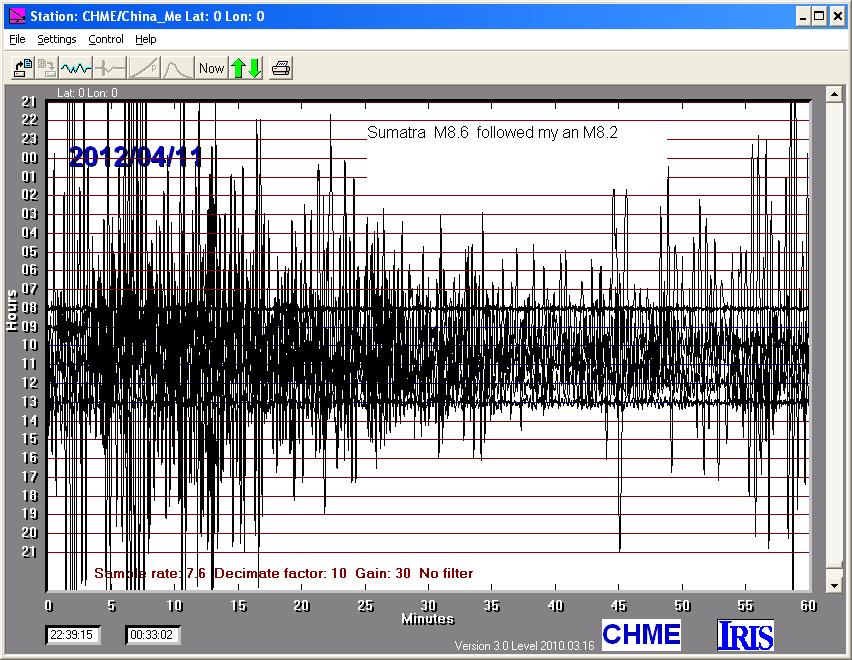

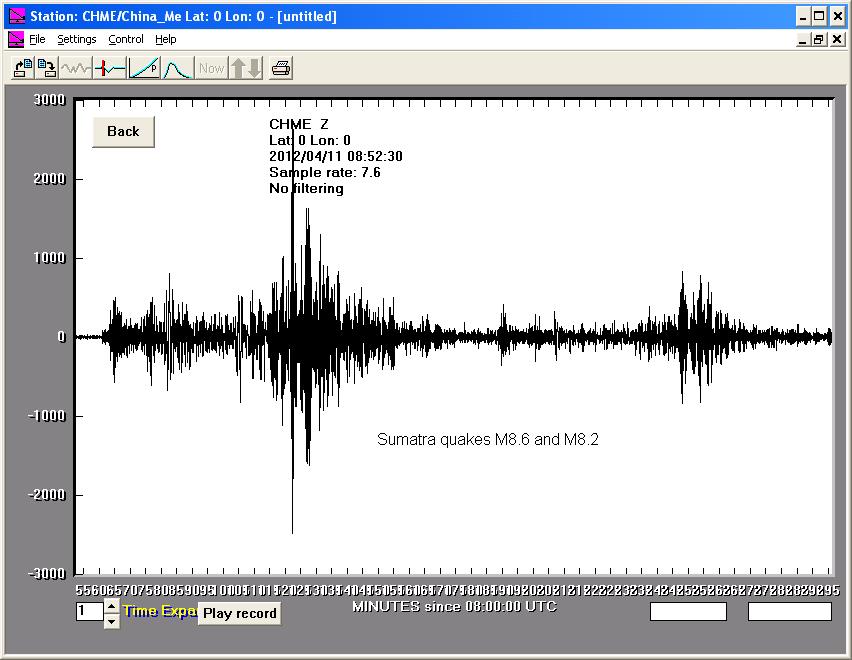
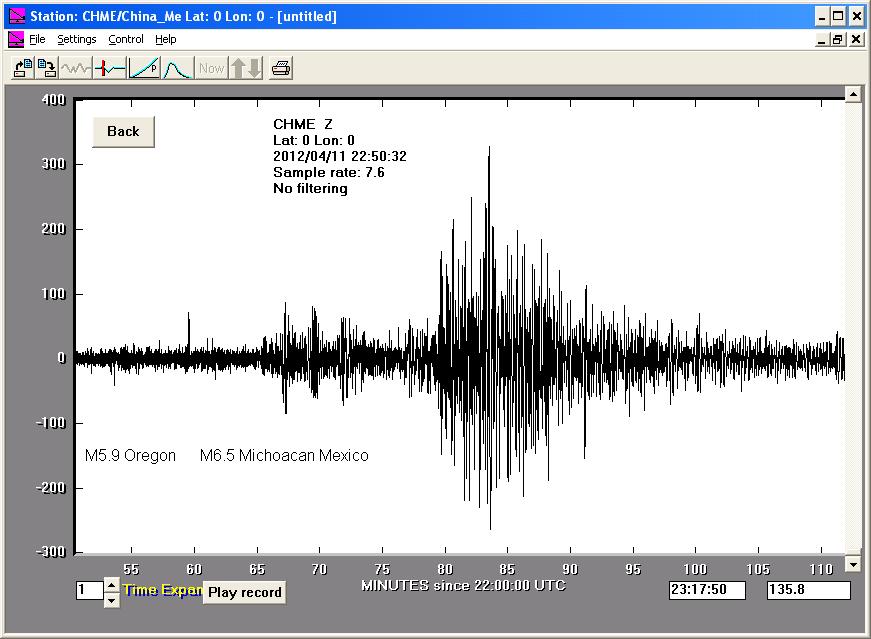

Another recent major earthquake in recent days this time in Maule, Chile. The M7.1 quake produced a much smaller recorded signal than the Mexico quake.
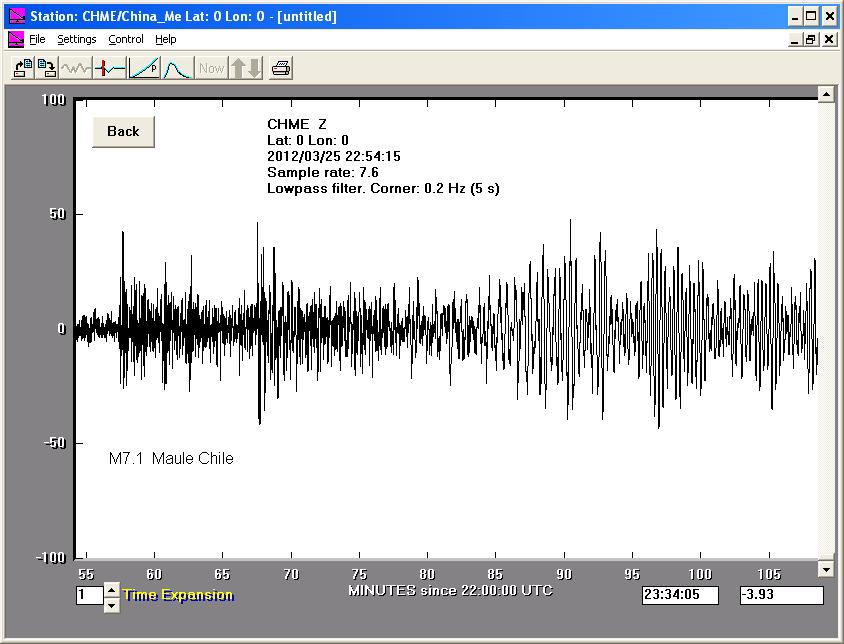
A recent earthquake in Oaxaca Mexico was a M7.4.
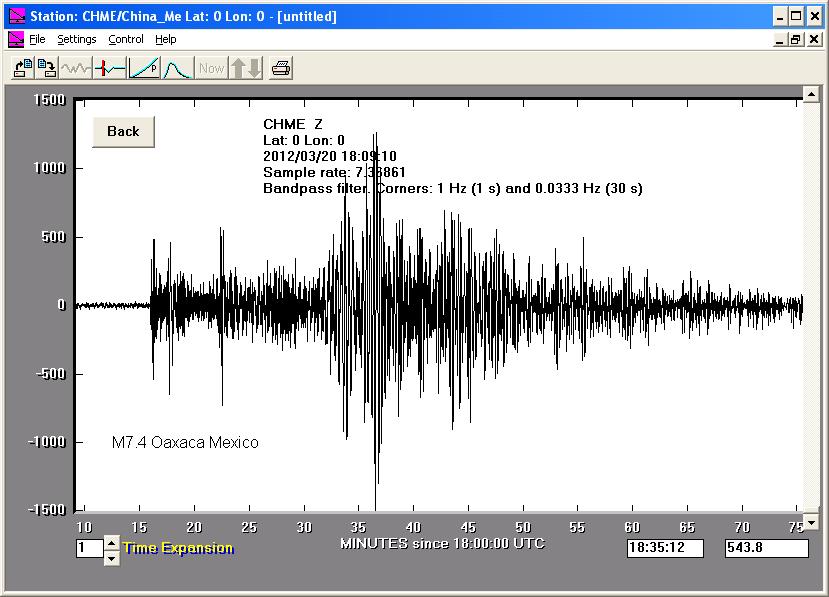
Another large but far away earthquake, this time in Vanuatu and M7.1. Some surface waves were recorded. It seems that activity has been quiet the pass couple of months.
An M7.3 earthquake of the West coast of Northern Sumatra produced some surface waves. The seismometer is picking up more noise since I moved it to a new location in the basement. Some more work is needed to isolate it from drafts.
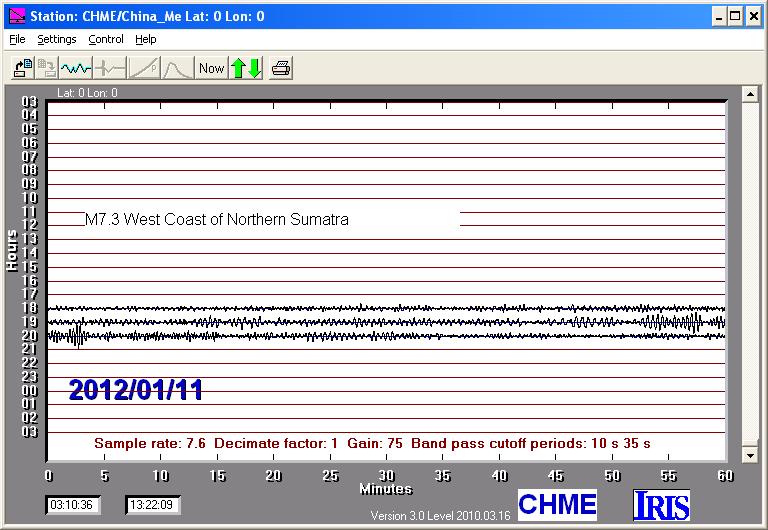
There have been 3 fair size earthquakes in Oklahoma in the past 2 days. The latest was magnitude 5.6 early this morning. The recorded waves are in 1 second to 10 second range of periods.
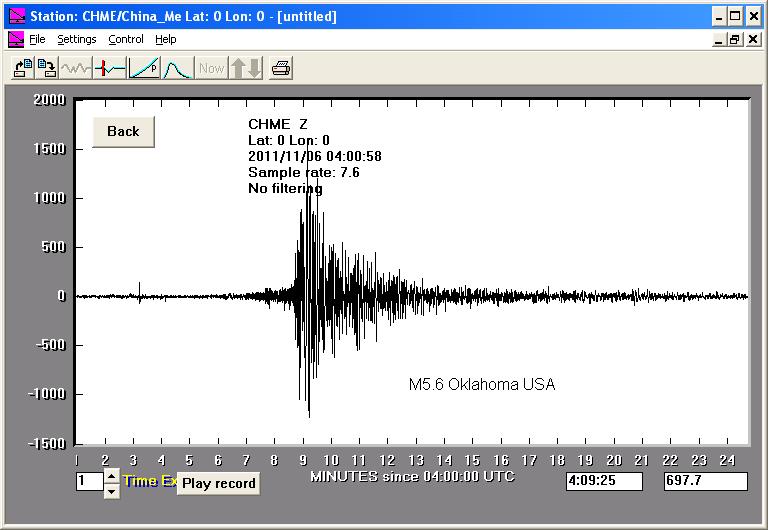
A M6.9 quake off the coast of Peru.
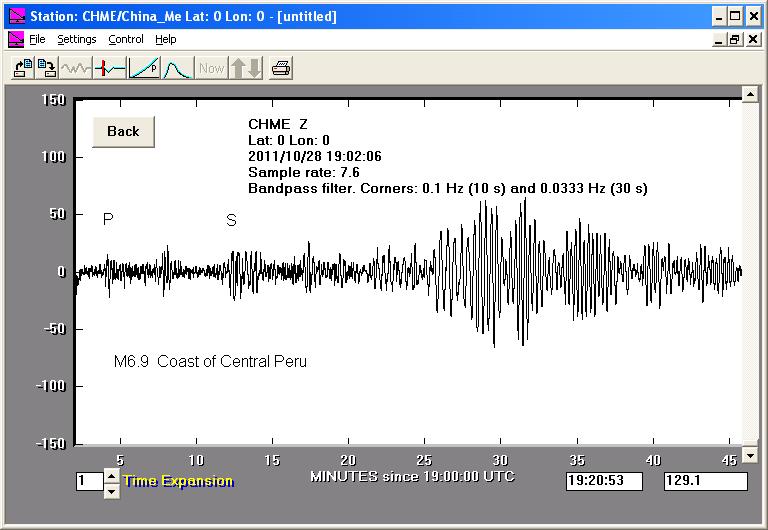
The 2nd major quake in a couple of days, this one of M7.2 in Eastern Turkey. This quake was in a populated area and caused some damage and loss of life.
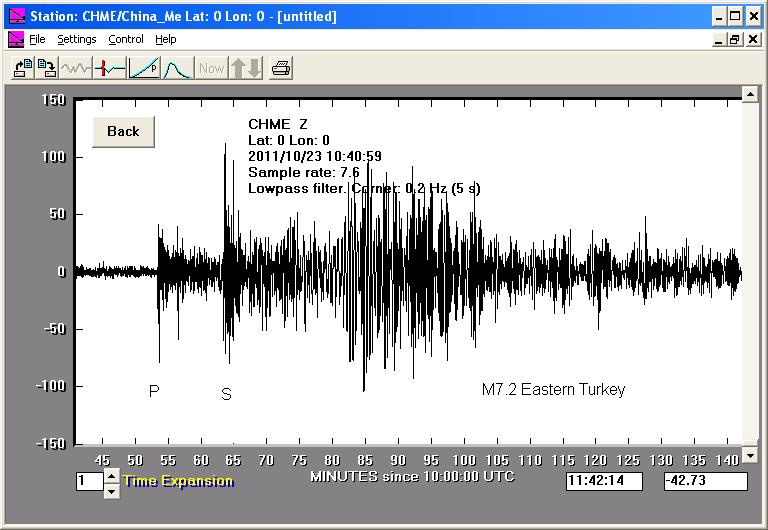
A major earthquake of M7.4 in the Kermadec Islands region of New Zealand. Shown is some early S waves arriving about 1825 followed by the LQ and LR surface waves at about 1850.
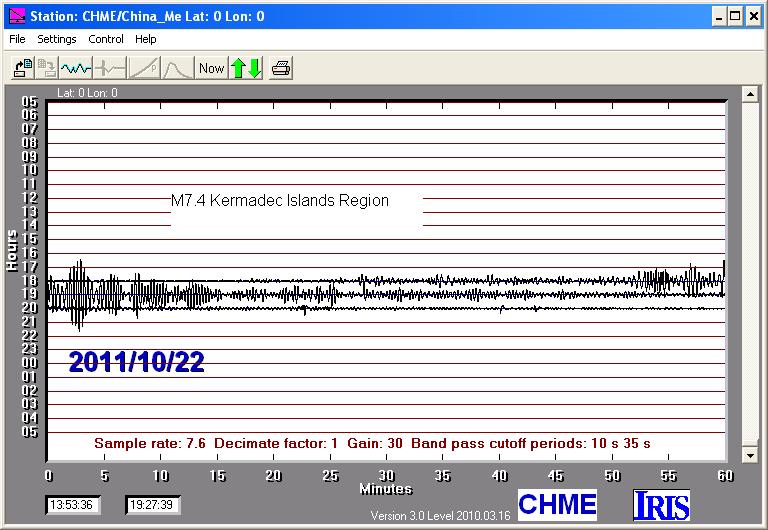
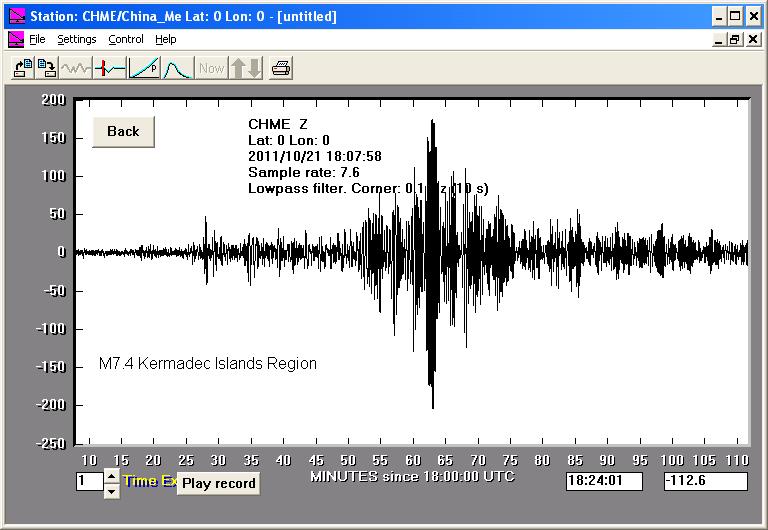
The station recorded two distant earthquakes today. A M6.7 at 3:35 UTC in Papua New Guinea and a M6.1 at 6:10 UTC in Amurskaya Oblast, Russia. The Russian quake shut down an oil pipeline for a few hours.
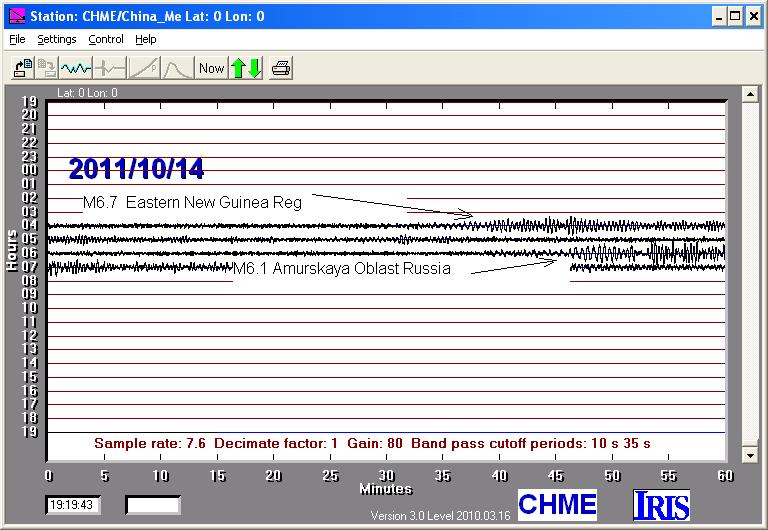
A M5.3 in Northwest Territories Canada. This relatively close quake( 36.9 deg) was very shallow. Not much was recorded of the P and S waves, but the surface waves produced a large signal.
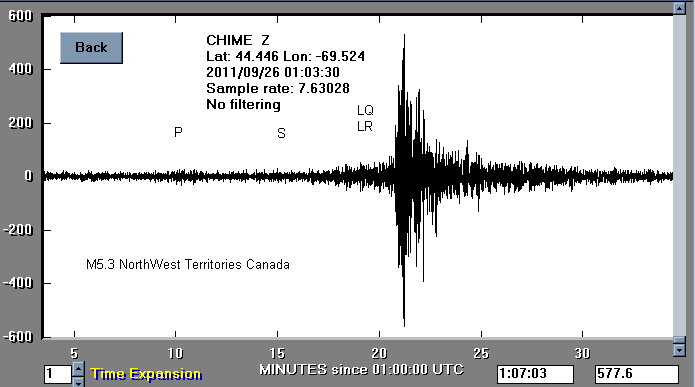
M6.9 earthquake in a remote area of India caused extensive damage and loss of life. Surface waves were recorded here on the east coast of the USA.
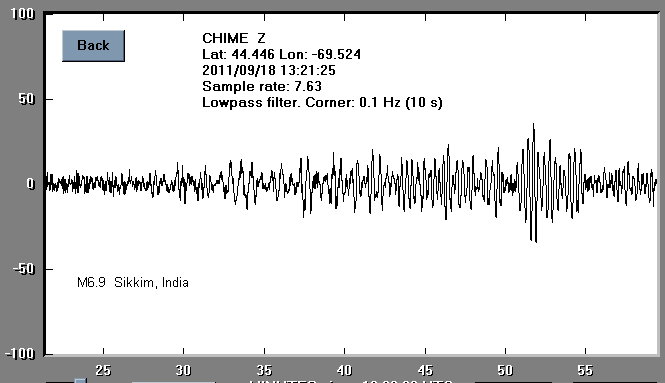
Another M6.7 Honshu earthquake. S waves and surface waves were recorded.
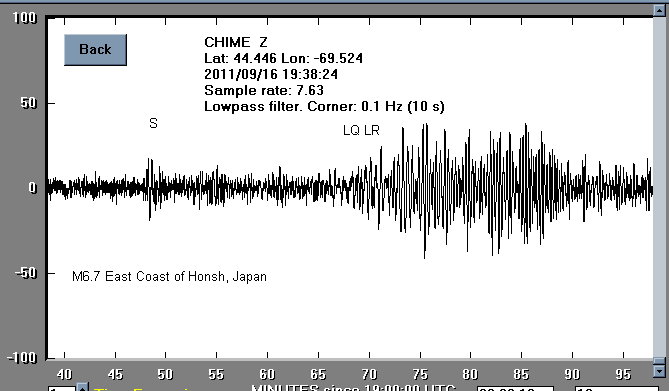
M6.4 earthquake on Vancouver Island. The surface waves produced a very large signal on the east coast. There were no early reports of damage.
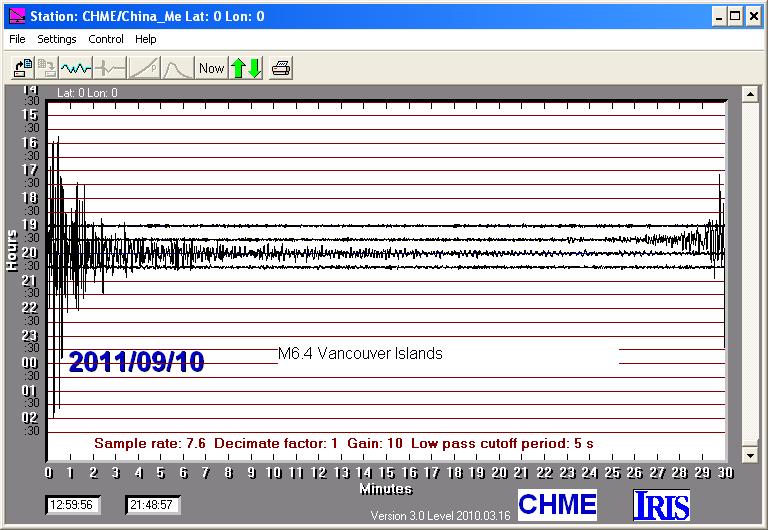
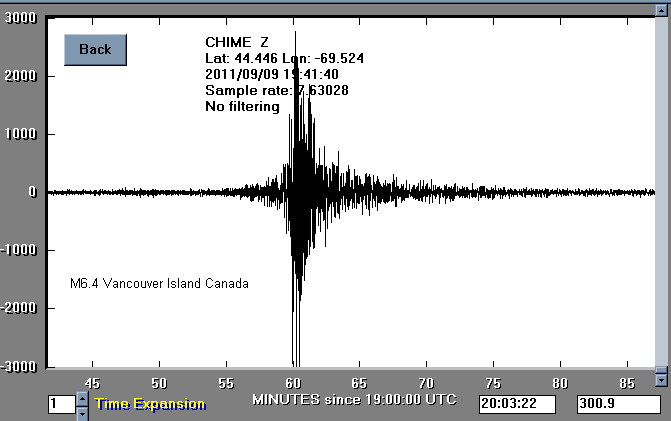
A M6.7 earthquake in Argentina. This quake was very deep at 600km, so no surface waves were recorded. The P and S waves produced a nice recording.
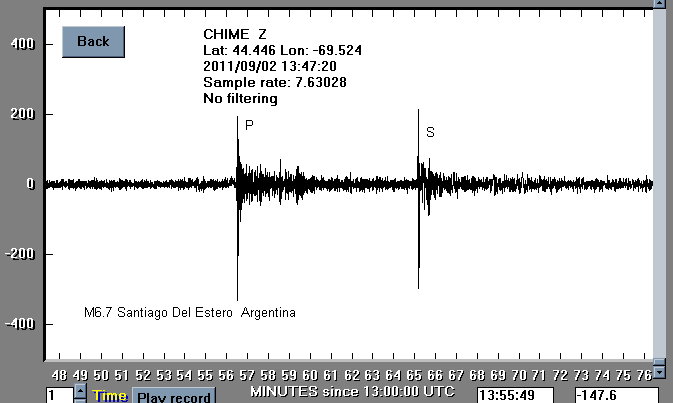
Another Fox Islands quake, this was originally classed as a 7.1 and downgraded to 6.8. The 1 hz FIR filter has been removed as discussed below which should help with recording P wave signals from close earthquakes.
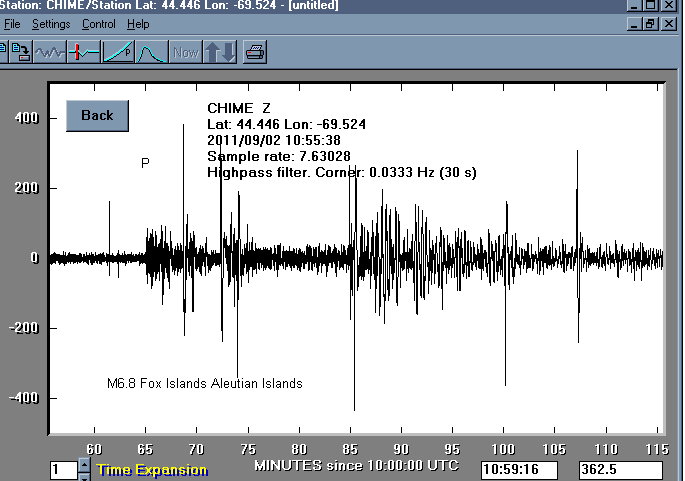
Yet another major quake, this one in Peru of magnitude 7.0. This quake was quite deep at 145 km and did not produce large surface waves. Unfortunatly, the seismometer was recording glitches during the time of this quake.

Today there were two unusual earthquakes in the USA. First was a M5.3 earthquake in Colorado. This was considered as a once in 40 years or so event. This earthquake was soon overshadowed in the news by a M5.8 earthquake in Virginia, and this earthquake was considered a once in 100 years or more event. Although these quakes are considered moderate, they are the closest quakes yet recorded at this station and produced large signals.
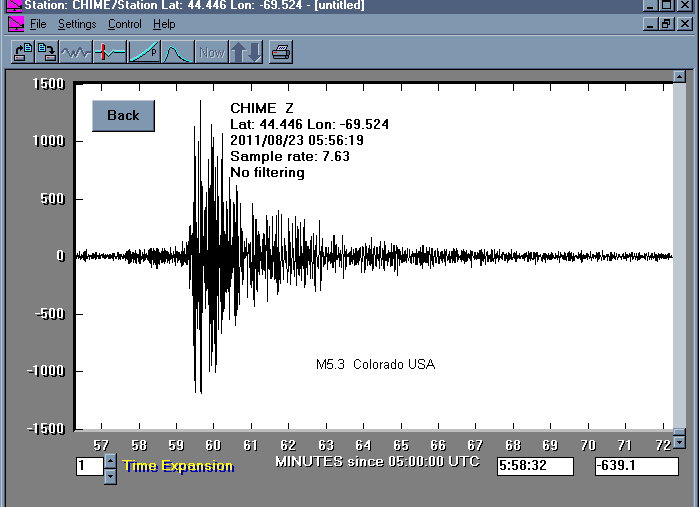
The eastcoast quake produced a signal that is at the limit of the 13 bit dynamic range of the current setup.
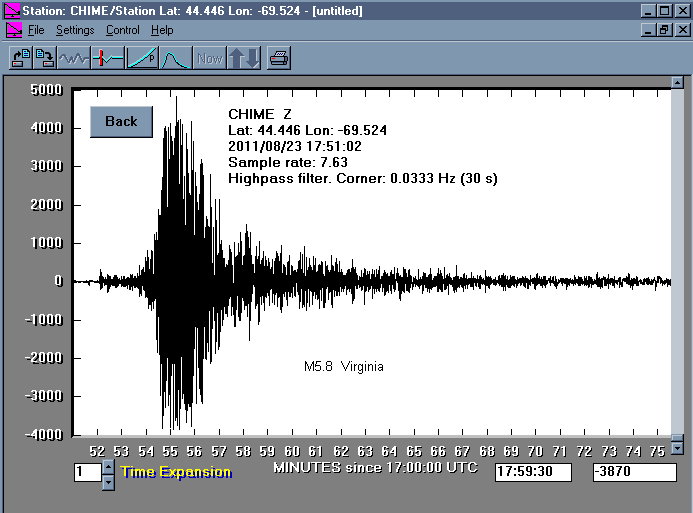
The frequency response shows the dip at 1.8 seconds caused by the FIR filtering and since the signal increases in the 2 to 3 hz range, I would think that currently we may be filtering too much. The analog filters roll off at 3 hz and it may have been interesting to see what this quake looked like with more high frequencys in the recording.
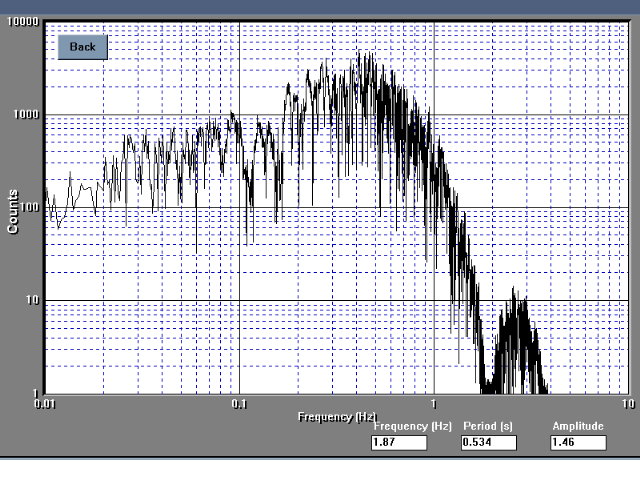
Vanuatu, South Pacific: two major earthquakes, magnitude 7.1 followed by a 7.0 about a hour later. Surface waves were recorded for 4 hours in duration in Maine.
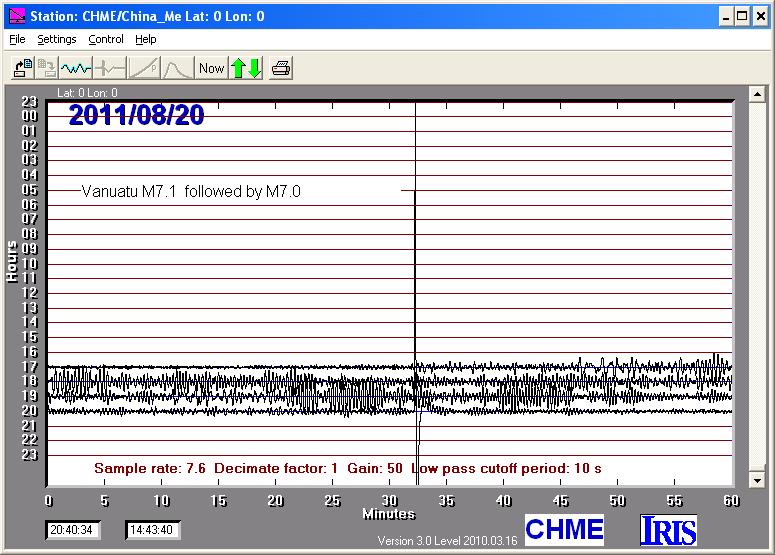
Recorded today were some surface waves from a M4.6 earthquake at the Queen Charlotte Islands.
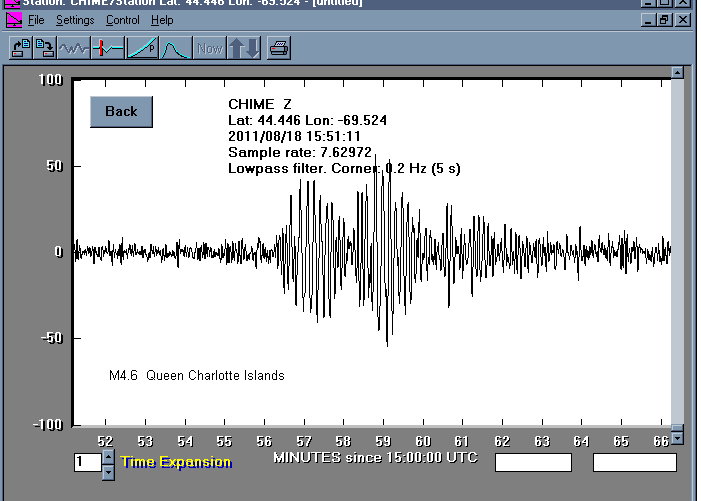
M6.3 Kuril Islands quake. Recorded are S waves and LQ LR surface waves. The Kuril Islands are just north of Japan.
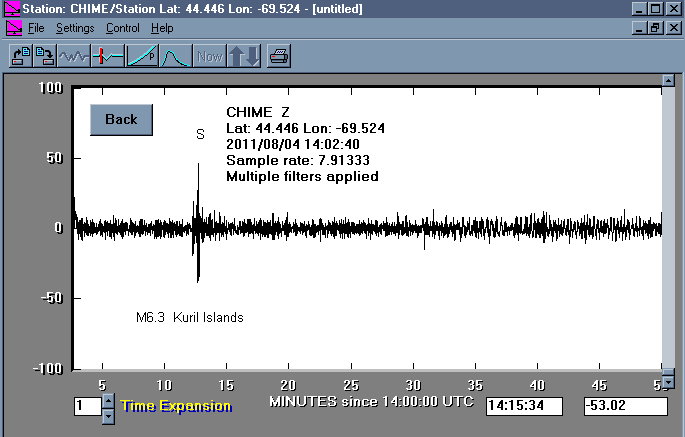
Displayed are two earthquakes of the same magnatude and about the same distance from my station. The Gulf of California quake produced a very large signal. The Northern Mid-Atlantic Ridge quake recorded at a much lower amplitude. The scale displayed is 10 times larger for the Atlantic quake, yet it still displays smaller.
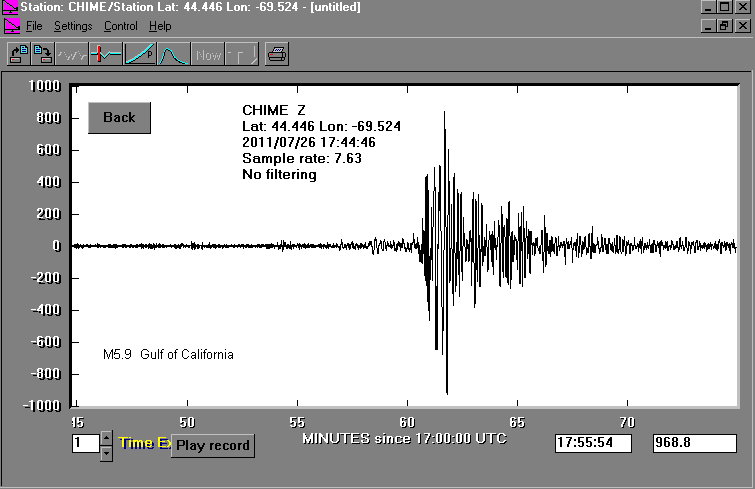
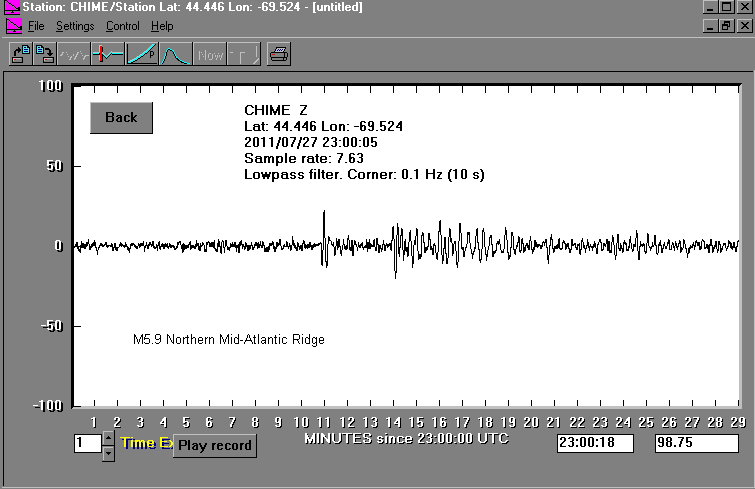
M6.2 New Ireland Region of Papua New Guinea. LQ and LR surface waves were detected from this distant quake.
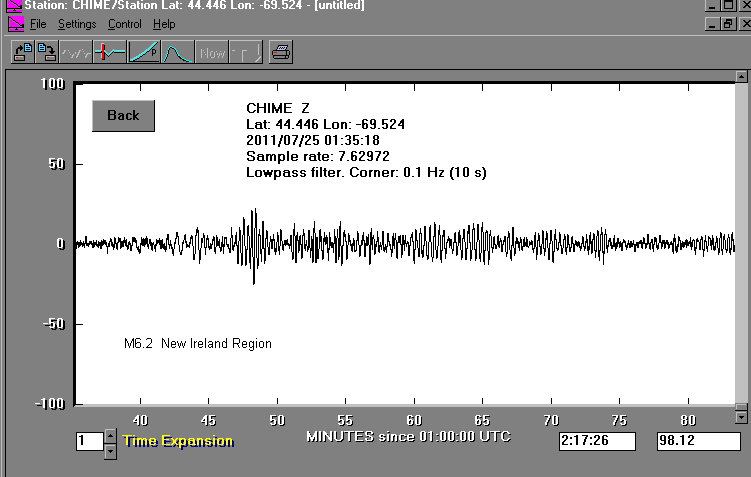
Glitches. Large transient signals. Caused by mice, spiders, bad part, bad design, electrical, mechanical??? I have changed a cap in the high pass filter thinking it may be leaky. I changed the base support thinking it may be warping. I ran on battery in case it was a power supply issue. Maybe they are caused by the heat wave this summer.
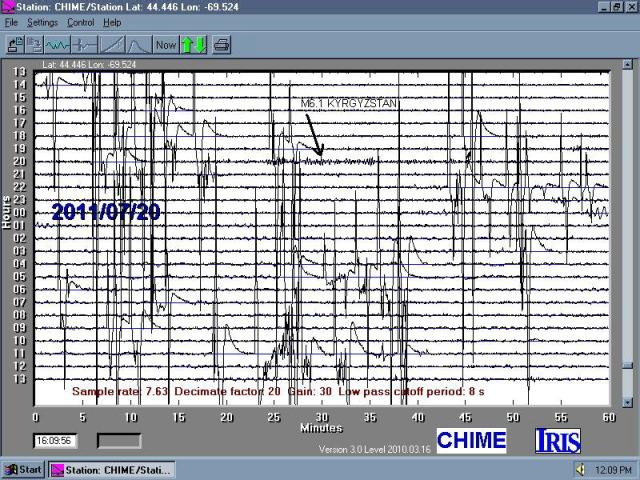
A M6.1 earthquake on the Alaska Peninsula. My PC clock was off by almost an hour due to a power outage.
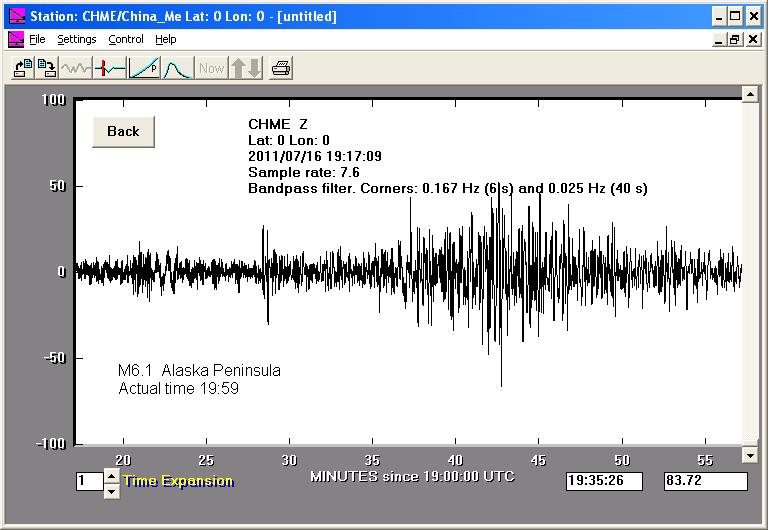
The 3rd major quake in the past few weeks, this time a M7.0 near Japan. The displayed scale on this recording is 200 units compared to 1000 units on the Kermadec quake. The estimated 20 second displacement for this Japan quake at my location was 54 um compared to an estimated 139 um for the Kermadec quake. The estimates are from the USGS arrival time calculator. 139 um is 1/10 th of a millimeter, an almost observable movement.
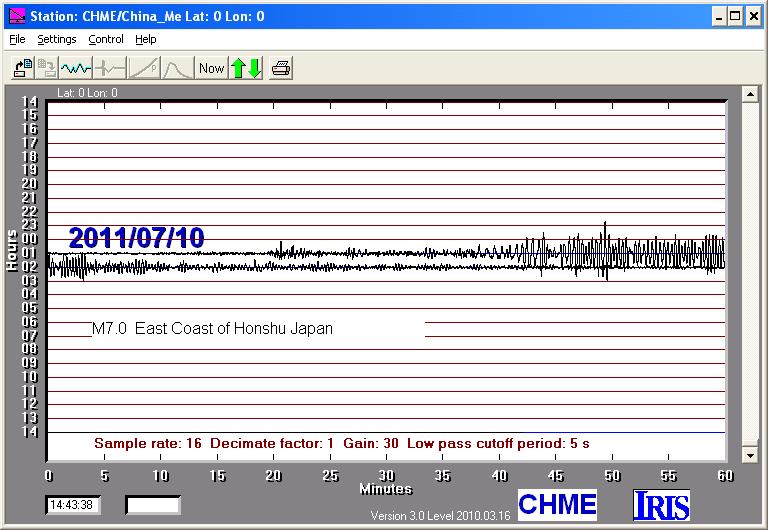
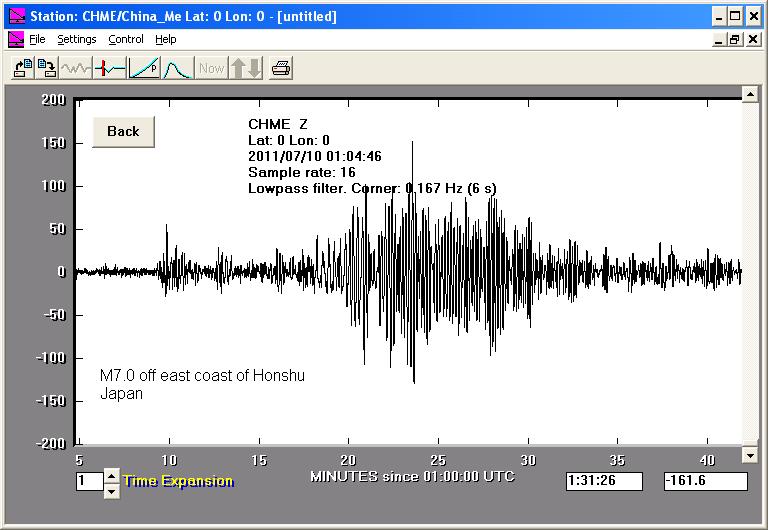
Another major earthquake, this time new New Zealand in the Kermadec Island Region. A tsunami warning was issued and soon lifted.

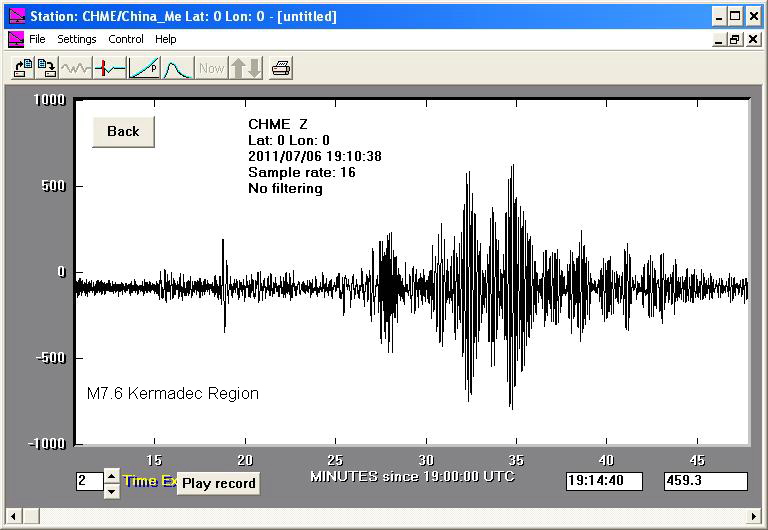
Near the coast of Nicaragua, there was a 5.8 quake on July 3rd. The short frequencies recorded well. This signal is shown unfiltered as filtering looses too much of the short P and S waves.
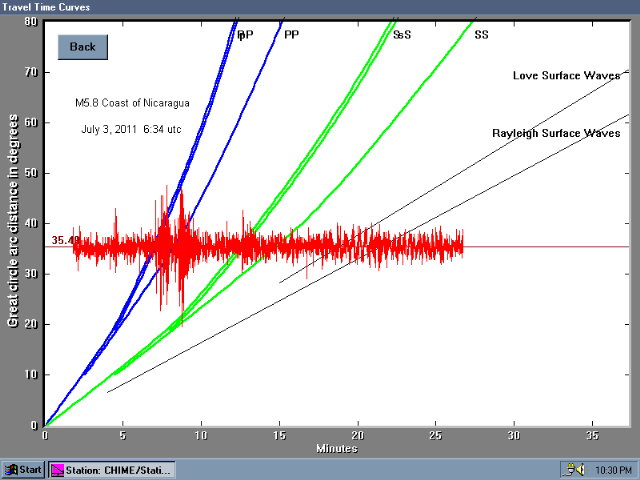
There was a major earthquake of M7.2 in Alaska yesterday.
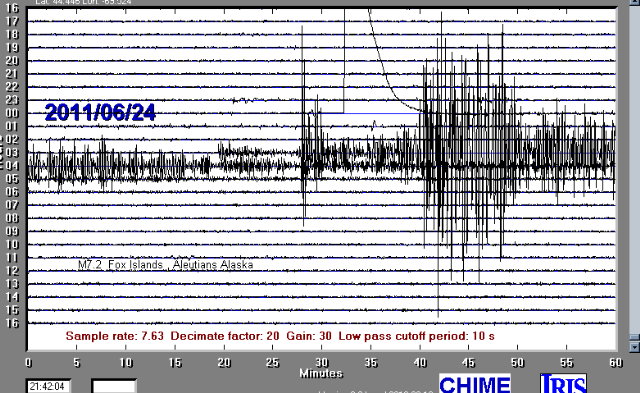
Earlier( below ) I discussed the tradeoffs of sensitivity and dynamic range and this quake shows just how quickly one approaches the high end of the dynamic range with a large quake. Most of the previous signals are displayed with a scale of +-100 and this quake is on a scale of +-1500.
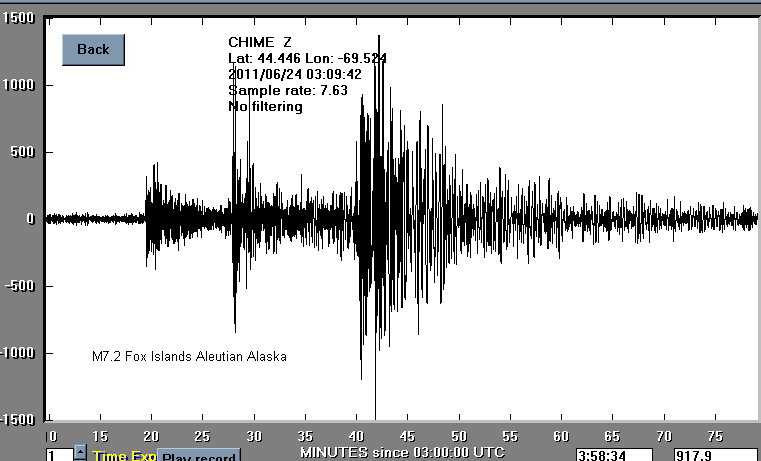
So the amplitude of the quake has increased over 10 times for quakes in the M6 range to one of M7.2. This seems correct as the scale is log base 10, so a M6 to M7 would be 10 times the signal. This quake also produced a quality recording and allows some analysis of the recording using some of the features of the amaseis program.
The P waves recorded with periods of about 2 to 5 seconds. Since the period of the seismometer is in this range, one questions what part of this signal is characteristic of the quake and what part is due to the seismometer. The S waves recorded with periods in the 6 second range. The surface waves, LQ and LR, recorded with periods of 8 to 24 seconds. The travel time calculation screen shows the quake was about 63 degrees from Maine.
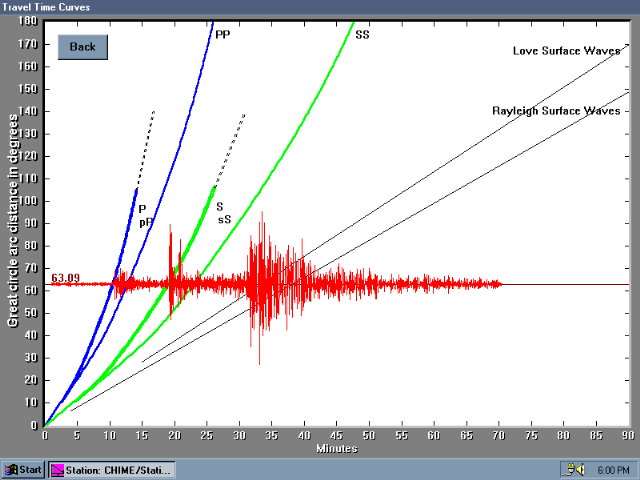
A M6.7 earthquake near Honshu Japan made the news today as the 75th aftershock of magnitude 6 or larger since the 9.0 earthquake. The recording has a good record of the S waves and the LQ LR surface waves. The P waves are down in the noise.
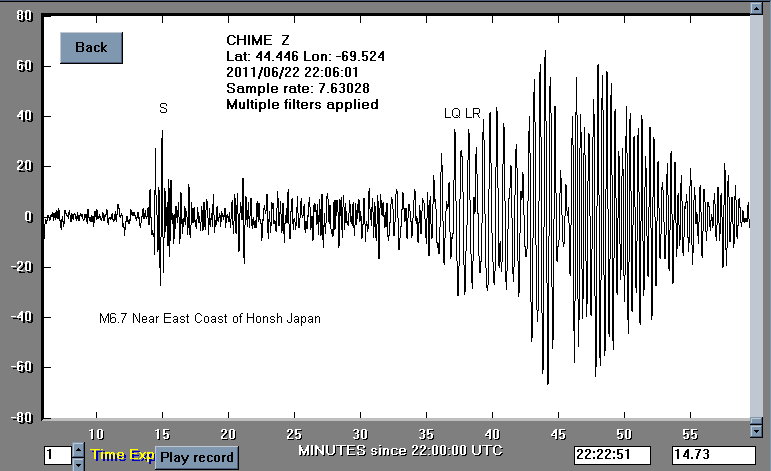
A deep earthquake in Chile produces a burst of S waves.
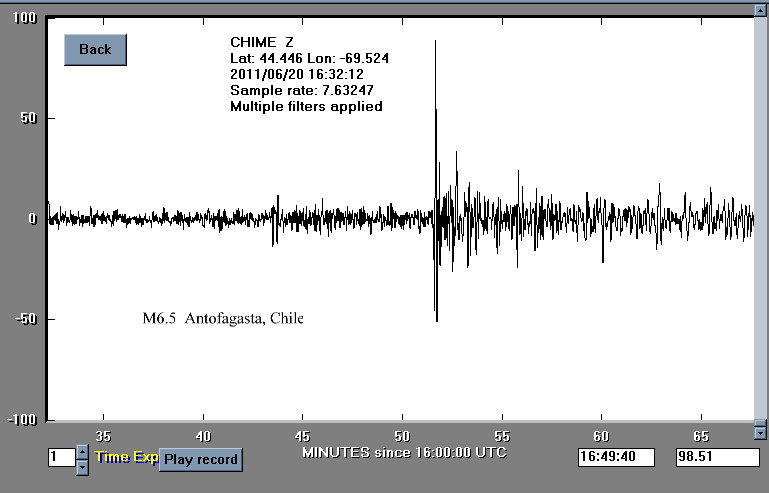
A Queen Charlotte Islands M4.9 earthquake on the West Coast. A short burst of surface waves arrived about 20 minutes after the quake.
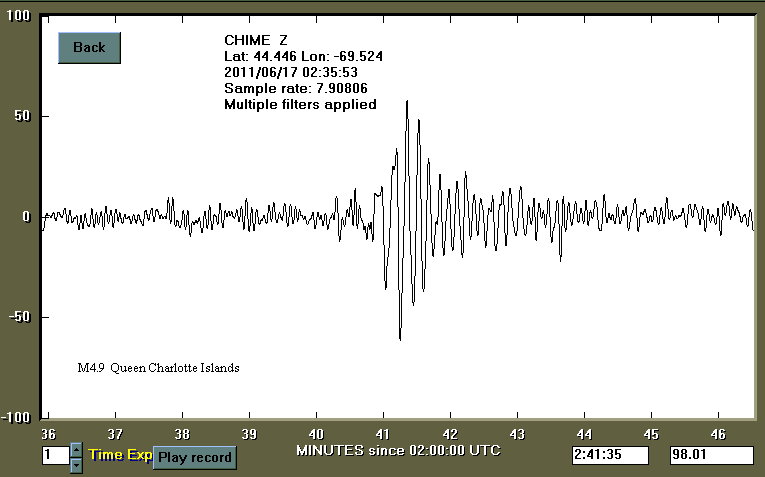
This M6.6 quake was recorded with a 68hc11 Axiom board that I had lying around. Pictured are the surface waves that arrived in Maine about an hour after the earthquake in Papua New Guinea. The 68hc11 has an 8 bit A/D. I have expanded that to 13 bits by sampling signals at different amplification and shifting the 8 bits up as appropriate. The result is sort of like having an 8 bit mantissa and an exponent of some power of two.

These two signals are about the same amplitude, one was recorded with low gain. The low gain signal uses only 4 bits of the A/D converter to record the signal. Even with such low level of recording, the P wave and S wave arrivals are easily seen. This level of signal may be about right if one was using an 8 bit A/D. The higher gain signal records more noise and may be able to detect a slightly weaker signal. The point of the experiment being a study of the tradeoff between dynamic range vs the ability to detect small signals. When the gain is too high, one looses dynamic range if the A/D saturates. An 8 bit A/D would saturate at signal levels of +- 128 on the scale shown.
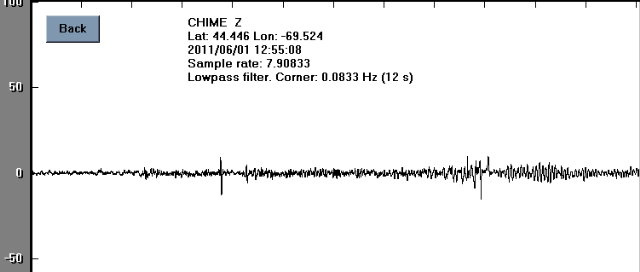
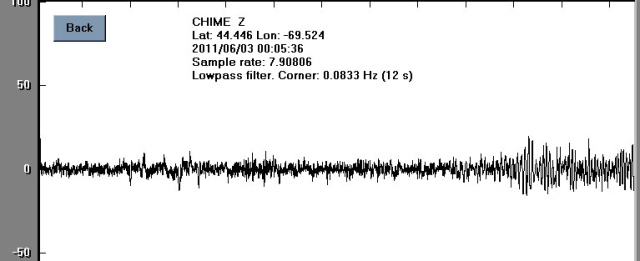
M6.2 Bio Bio Chile upper picture, and M6.3 Honshu Japan lower picture.
This signal appears to be PP waves from a 4.7 Gulf of California earthquake. Since it was not listed in the list of worldwide quakes of 5.0 and larger, it took a bit of doing to find its location. The IRIS realtime online images were a big help as I could see by the timing of the signal on the stations around the country that it was closest to the Arizona stations. Most of the energy in this signal has a period around 10 seconds.
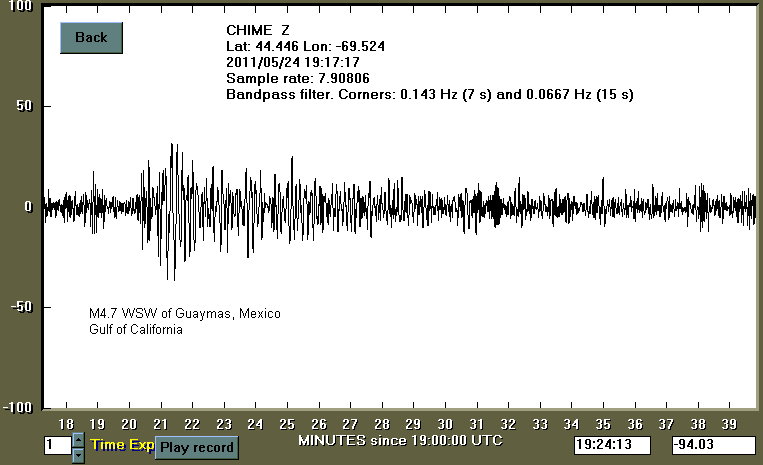
Lately I have been simulating replacing the TMS320C26 DSK with a PIC device. The reason for considering a PIC is that I may not want to permanently use the DSK with this project. The PIC would be limited to simple filtering algorithms and the ADC would be 10 bit vs the DSK 14 bits. I came up with some FIR filter coefficients that do not require a multiply - they can use shifts and adds. The coefficients are .125 .25 .375 .5 .375 .25 .125. Sampling at 256 samples per second, this filter has a deep notch at 60 hz. Samples out of the filter are summed and after 32 samples, the sum is shifted to form the average value. Then the same filter is used again at a sample rate of 8 samples per second. This produces a filter that cuts off sharply at just beyond 1 hz. The AMASEIS FFT on received noise gives a fairly good idea of the resulting response.
I was changing the DSP band reject filters when the early 30 second waves started recording from this distant quake. At first I thought I had messed something up. I had been using IIR filters, but found they saturated too early. A FIR filter was made from the impulse response of the IIR filter. The filter rejects the microseisms and natural frequency of the pendulum - about 2.5 sec in period.
About the limits of what I can detect, limited mostly by local noise. My recording compared to one from a professional instrument at the local college. Compare hour 9 on top to hour 13 on bottom. The pictures appear to be shifted by about 5 minutes from each other due to a slightly different scaling.
May 9 and May 10 - wired proto circuit onto copper and missed the Loyalty Islands earthquake. View of the wired circuit with the position sensor. The photo-transistor is in an opamp circuit that keeps the voltage across the transistor constant. It never enters cutoff or saturation. Then there is a low pass filter with a gain of 5, followed by a highpass filter with a selection of two gains; 2 or 6.6. The last stage is a 2 pole unity gain lowpass filter.

A busy day - 4 quakes in 5 hours.
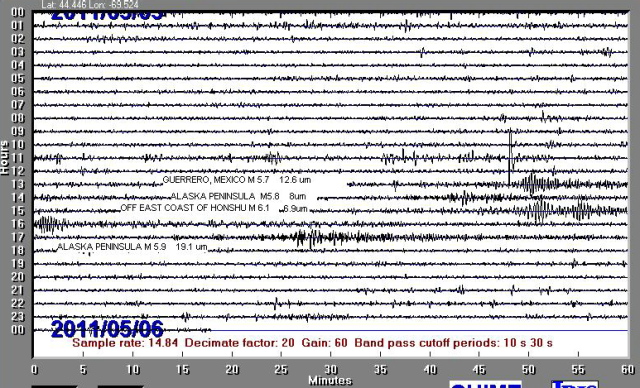
A magnitude 6.2 quake south of Panama. The signal was IIR filtered in my DSP starter kit for this recording. The DSK has a 14 bit A/D converter.
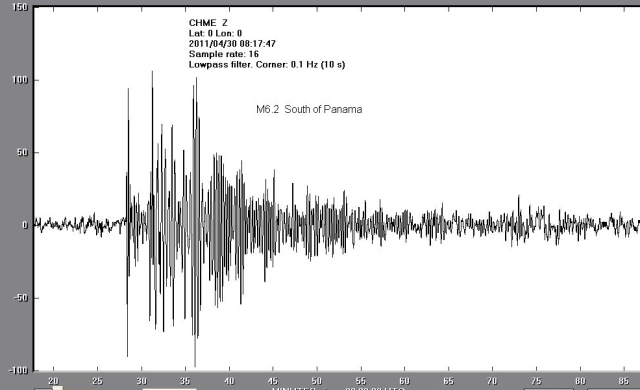
Another Gulf of California quake. Gain of prototype detector was about 20 at this time.
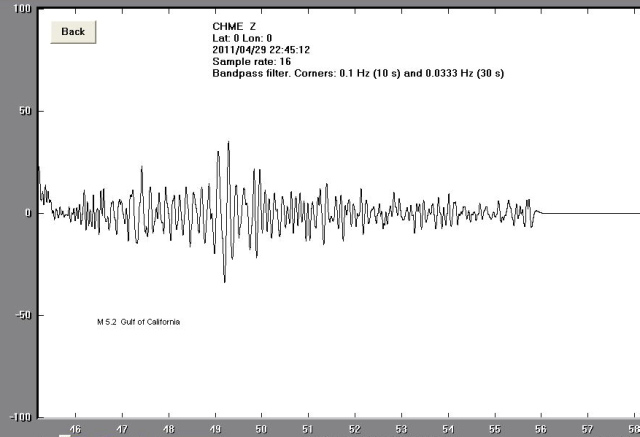
First earthquake detected. This was while the detector was still on a protoboard. Gain at this time was about 5. Background noise was about the same as the ADC noise at this level of gain.
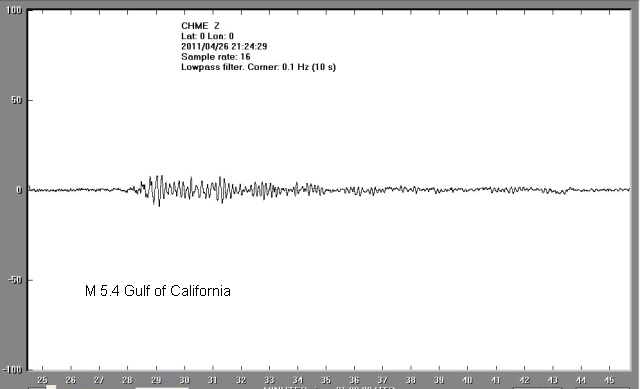
I am using the AMASEIS program, which is very nicely done. I had two problems getting started. First was lack of technical documentation about the data on the serial link. This turned out to be just ascii numbers separated by crlf characters. Second was deciding what device I should pick and the ini file. I was trying to use 4800 baud, and found that the ini file kept getting re-written by the program with a different baud rate. Once I stopped trying to edit this file and just use the baud rate in the file, everything started working.
I built the seismometer from scrap material found in the basement. The aluminium is pop riveted together. The mass is a 3 ounce fishing sinker. The hinges are made from a floppy disk - top hinge is the magnetic media, the bottom hinge is the metal part that covers media when not in use. The period is about 2.5 seconds and seems greatly influenced by the lower metal hinge stiffness.
